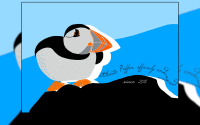21 May 2010
by Elizabeth Pennisi
For 15 years, J. Craig Venter has chased a dream: to build a genome from scratch and use it to make synthetic life. Now, he and his team at the J. Craig Venter Institute (JCVI) in Rockville, Maryland, and San Diego, California, say they have realized that dream. In this week's Science Express (www.sciencemag.org/cgi/content/abstract/science.1190719), they describe the stepwise creation of a bacterial chromosome and the successful transfer of it into a bacterium, where it replaced the native DNA. Powered by the synthetic genome, that microbial cell began replicating and making a new set of proteins.
This is "a defining moment in the history of biology and biotechnology," says Mark Bedau, a philosopher at Reed College in Portland, Oregon, and editor of the scientific journal Artificial Life. "It represents an important technical milestone in the new field of synthetic genomics," says yeast biologist Jef Boeke of Johns Hopkins University School of Medicine in Baltimore, Maryland.
The synthetic genome created by Venter's team is almost identical to that of a natural bacterium. It was achieved at great expense, an estimated $40 million, and effort, 20 people working for more than a decade. Despite this success, creating heavily customized genomes, such as ones that make fuels or pharmaceuticals, and getting them to "boot" up the same way in a cell is not yet a reality. "There are great challenges ahead before genetic engineers can mix, match, and fully design an organism's genome from scratch," notes Paul Keim, a molecular geneticist at Northern Arizona University in Flagstaff.
The "synthetic" bacteria unveiled this week have their origins in a project headed by Venter and JCVI colleagues Clyde Hutchison III and Hamilton Smith to determine the minimal instructions needed for microbial life and from there add genes that could turn a bacterium into a factory producing compounds useful for humankind. In 1995, a team led by the trio sequenced the 600,000-base chromosome of a bacterium called Mycoplasma genitalium, the smallest genome of a free-living organism. The microbe has about 500 genes, and researchers found they could delete 100 individual genes without ill effect (Science, 14 February 2003, p. 1006).
But confirming the minimal genome suggested by those experiments required synthesizing a full bacterial chromosome and getting it to work in a recipient cell, two steps that have taken years because the technology to make and manipulate whole chromosomes did not exist. In 2007, Venter, Smith, Hutchison, and colleagues finally demonstrated that they could transplant natural chromosomes from one microbial species to another (Science, 3 August 2007, p. 632). By 2008, they showed that they could make an artificial chromosome that matched M. genitalium's but also contained "watermark" DNA sequences that would enable them to tell the synthetic genome from the natural one (Science, 29 February 2008, p. 1215).
Life re-created. Blue colonies (top) indicate a successfully transplanted genome, with self-replicating bacteria revealed in an electron micrograph.CREDITS (TOP TO BOTTOM): J. CRAIG VENTER INSTITUTE; T. DEERINCK AND M. ELLISMAN/NCMIR, UNIVERSITY OF CALIFORNIA, SAN DIEGO
[Larger version of this image]
But combining those steps became bogged down, in part because M. genitalium grows so slowly that one experiment can take weeks to complete. The team decided to change microbes in midstream, sequencing the 1-million-base genome of the faster-growing M. mycoides and beginning to build a synthetic copy of its chromosome. Last year, they showed they could extract the M. mycoides natural chromosome, place it into yeast, modify the bacterial genome, and then transfer it to M. capricolum, a close microbial relative (Science, 21 August 2009, p. 928; 25 September 2009, p. 1693). The next step was to show that the synthetic copy of the bacterial DNA could be handled the same way.
The researchers started building their synthetic chromosome by going DNA shopping. They bought from a company more than 1000 1080-base sequences that covered the whole M. mycoides genome; to facilitate their assembly in the correct order, the ends of each sequence had 80 bases that overlapped with its neighbors. So that the assembled genome would be recognizable as synthetic, four of the ordered DNA sequences contained strings of bases that, in code, spell out an e-mail address, the names of many of the people involved in the project, and a few famous quotations.
Using yeast to assemble the synthetic DNA in stages, the researchers first stitched together 10,000-base sequences, then 100,000-base sequences, and finally the complete genome. However, when they initially put the synthetic genome into M. capricolum, nothing happened. Like computer programmers debugging faulty software, they systematically transplanted combinations of synthetic and natural DNA, finally homing in on a single-base mistake in the synthetic genome. The error delayed the project 3 months.
After months of unsuccessfully transplanting these various genome combinations, the team's fortune changed about a month ago when the biologists found a blue colony of bacteria had rapidly grown on a lab plate over the weekend. (Blue showed the cells were using the new genome). Project leader Daniel Gibson sent Venter a text message declaring success. "I took my video camera in and filmed [the plate]," says Venter.
They sequenced the DNA in this colony, confirming that the bacteria had the synthetic genome, and checked that the microbes were indeed making proteins characteristic of M. mycoides rather than M capricolum. The colony grew like a typical M. mycoides as well. "We clearly transformed one cell into another," says Venter.
"That's a pretty amazing accomplishment," says Anthony Forster, a molecular biologist at Vanderbilt University in Nashville, Tennessee. Still, he and others emphasize that this work didn't create a truly synthetic life form, because the genome was put into an existing cell.
At the moment, the techniques employed by Venter's team are too difficult to appeal to any potential bioterrorists, researchers stress. Nonetheless, "this experiment will certainly reconfigure the ethical imagination," says Paul Rabinow, an anthropologist at the University of California, Berkeley, who studies synthetic biology. "Over the long term, the approach will be used to synthesize increasingly novel designed genomes," says Kenneth Oye, a social scientist at the Massachusetts Institute of Technology in Cambridge. "Right now, we are shooting in the dark as to what the long-term benefits and long-term risks will be."
As ever more "artificial" life comes into reach, regulatory agencies will need to establish the proper regulations in a timely fashion, adds Oye. "The possibility of misuse unfortunately exists," says Eckard Wimmer of Stony Brook University in New York state, who led a team that in 2002 created the first synthetic virus (Science, 9 August 2002, p. 1016).
Venter says that JCVI has applied for several patents covering the work, assigning them to his company, Synthetic Genomics, which provided much of the funding for the project. A technology watchdog group, ETC Group in Ottawa, has argued that these actions could result in a monopoly on synthesized life (Science, 15 June 2007, p. 1557), but others are not worried. Given the current climate for granting and upholding patents of this type, says Oye, "it is unlikely that Synthetic Genomics will become the Microsoft of synthetic biology."
"One thing is sure," Boeke says. "Interesting creatures will be bubbling out of the Venter Institute's labs."






